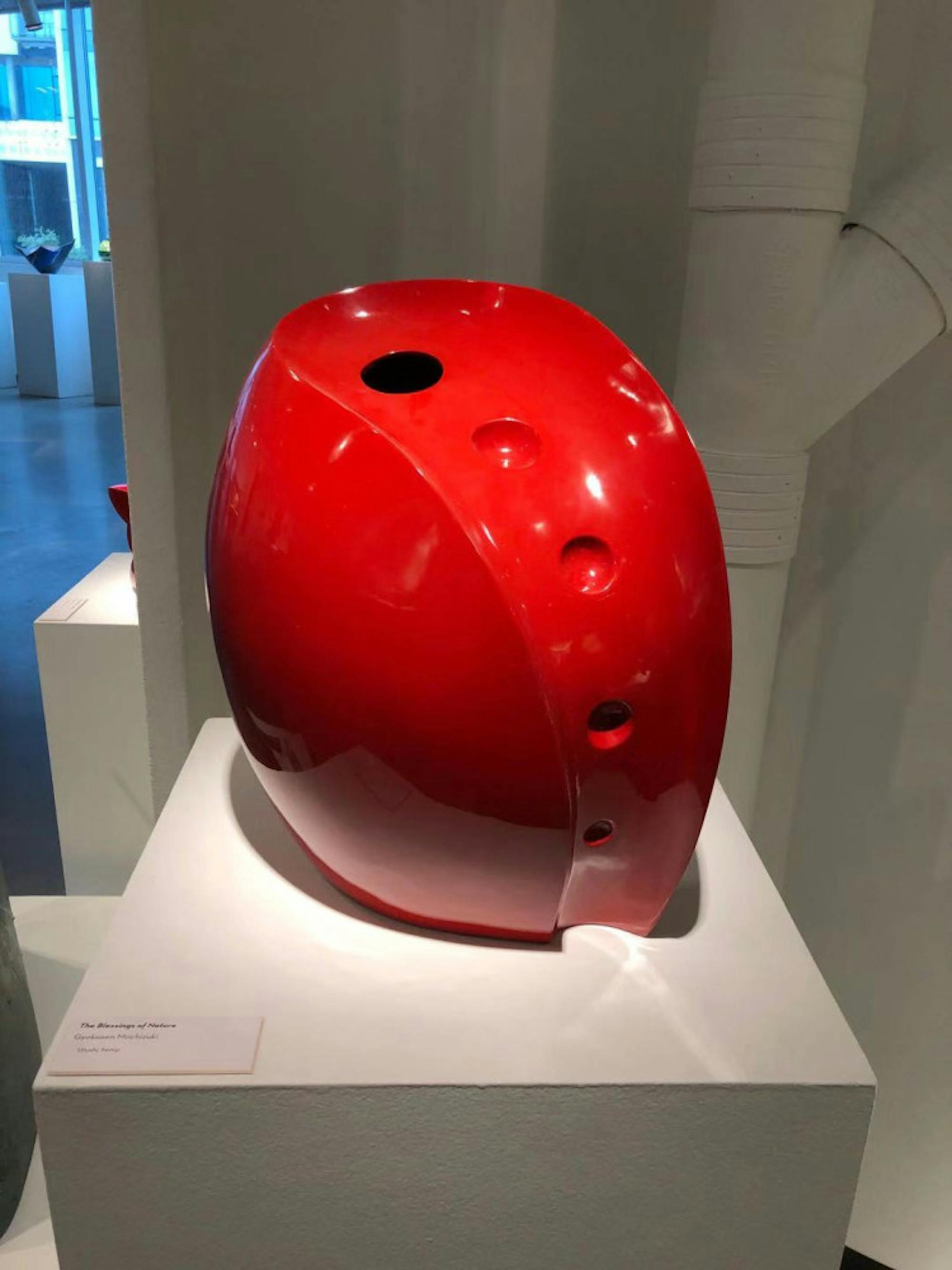"In a world of sameness, craft illuminates difference."
Words like "hand-made," "unique" and "unpretentious" illuminate the spirit of "Kogei,"a Japanese term that does not have a clear-cut meaning but embodies the long-rooted culture of craftsmanship. In contrast of Kogei, "Kogyo" has a strict definition of industry, representing artificiality, repetition and mass production.
The vaguely defined word Kogei indeed corresponds with the creative and individualistic array of Japanese handcrafts in the exhibition "Kogei-Kyoto at Society of Arts + Crafts Boston: Contemporary Innovators in Japanese Arts and Crafts" until Nov. 10. The creators of these crafts are members of Kogei-Kyoto, an artist group from Kyoto, Japan, that aspires to preserve Japanese craftsmanship and traditional artistic culture.
"Kogei-Kyoto at SA+C" presents both old-fashioned tools and innovative works that highlight distinctive personalities and expertises of creators, culminating in a diverse range of Japanese ceramics, lacquer, woodworking and fabric dyeing. The absence of rigid orders and rules among the pieces forms a sharp contrast with the monotonous layout of consumer goods in the nearby retail shops that exude characteristics of mass production.
Apart from the visual novelty and diverse artistic forms, the recurring theme of natural elements further enriches the experience as a refreshing escape from the busy city life. Artists from Kogei-Kyoto capture the subtle beauty of the natural fineness and communicated their feelings through carefully designed crafts. The flow of water, the dynamics of wind and the colors of seasons are presented with clean lines, primitive colors and simple mediums. Yet through the fusion of various simplicities, each work resonates vibrantly with the almost negligible details in our daily lives. In this tranquil and harmonious environment, time almost stops ticking because it wants to linger a bit more.
The clean and minimalistic style of the layout along with the emphasis of natural elements moreover reflects the harmony between humans and nature in Japaneseculture. Everything related to nature is a "kami,"which means god in Japanese, and all four seasons are highly cherished. The sense of awe and respect toward Japan’s natural beauty has fostered the simple and frugal pursuit of lifestyle as well as the gratitude for all things — whether magnificent or trivial — in life. Such value is manifested in the exhibition since everything, tangible and intangible, is aesthetically appreciated.
Glazed with a layer of uniform red that represents auspiciousness in Japanese culture, the sculpture “The Blessing of Nature” takes the abstract form of a seed to symbolize the birth of new lives; the mixed media work of “Colors of the Wind” vividly personifies the formless natural force into an intricate glass plate with wavy texture and subtle color changes. Interestingly, descriptions for each work are absent except their names, mediums, and artists’ names. Most of the works seem simple and straightforward in their forms and meanings, but the lack of exactness leaves the audience to wonder and create their own interpretations to truly amplify their essence and uniqueness.
A particularly meaningful facet of this exhibition is its purpose of celebrating 60 years of friendship between Boston and Kyoto as sister cities. "Kogei-Kyoto at SA+C" is Kogei-Kyoto's first exhibition in the U.S. Its spirit of traveling across the globe to spread their passion for crafts corresponds with The Society of Arts + Crafts' aim of "preserving, perfecting, and promoting the spirit of artisanship," allowing a warm embrace of friendship between Boston and Kyoto.






